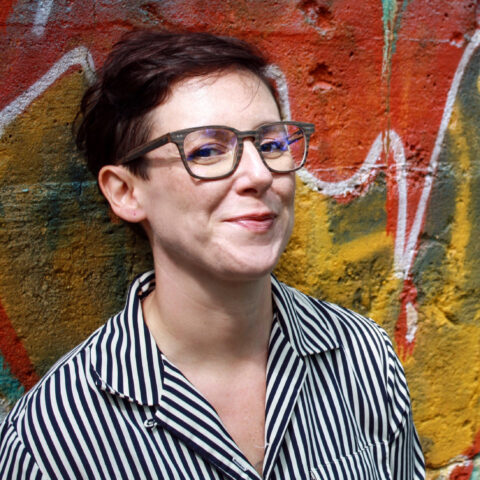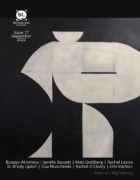How have your views on the archetypical “first date” changed over time? What about first dates is appealing from a narrative writer’s perspective?
I was just walking with someone the other day, actually looking at majestic swans in Roger Williams Park, chatting about the ways I’m readjusting my idea of romance, maybe even grieving this change. The anticipation of a first date still catches me: the silly-belly feeling, its light sensuality, the slow intimacy. But I’m also actively undoing any compulsory heterosexuality that I’ve inherited as a queer, gender-fluid creature, throwing out an old script for queer-slanted affection, which maybe makes for interaction all the more exciting. Unexpected and thrilling, even, allowing for “a new pattern.”
Can you speak to the presence of swans as an image in the story, and do you have any thoughts or advice for eschewing the fantastical and sensational regarding natural imagery or animals that appear in narrative writing? I feel like your use of swans avoids anything that feels cliche.
Yes, I’m actually writing toward a collection, informed by polytheistic imagery correspondences around a handful of specific Roman gods. The swans are one plotted star in a constellation, linked to the goddess Venus. I’m talking about love, using very old metaphors to make something new. I was trained as a Classicist, so Greek and Roman mythology speaks to me: I even studied Latin pretty heavily long ago. Every flash I wrote this summer was informed by this secret heartbeat. “Swan Lake” works because the imagery is implicit: I don’t explain the swan-connection to Venus to romance. I cut out the middle (wo)man, Venus. Eschewing a cliched fantastical means trusting the reader enough to make leaps, even when you erase the connections.
With “Swan Lake,” a single sentence is the entire piece, rather than a mere unit or module within the whole. How do you approach this style choice as a writer? Do you have any go-to influences behind this style choice? You previously spoke with SLQ about “Life Size.” How would you describe the formal intentions behind “Swan Lake” as similar or different? Are you a syntax nerd?
I am a total syntax nerd, like, the nerdiest. You might chalk that up to studying Latin, where translation almost feels like solving a puzzle or a math equation. I love the long sentence because I write according to breath. “Life Size” is breathless because of anxiety, a spiral through fear, then adrenaline, then depression, until it rises up, gasping in hope. “Swan Lake” pants in anxiety as well, but a nervous-happy anticipation, flying toward joy. Drafting the one sentence often feels like word vomit at first, a quick expulsion of everything at once. Then I tweak everything at the micro level, particularly toward sound. I read aloud, over and over to hear the rise and fall. I trust my ear.
As a self-proclaimed “hybrid fiend,” when and how did you first become inspired to work in hybrid modes? What is it about hybridity in narrative writing that keeps you interested?
Yes, hybrid is such a weird word. I’m really saying I love smashing two disparate things together to make something new. Some consider flash to be hybrid, a combination of the short story and the poem. Others need an image or multimedia component. I’m less interested in definition than I am in how that word catapults us forward. Hybrids have hooked me for a decade, since I was in graduate school, and I first leapt into erasure poetry, studying strange creative nonfiction. Incredible creativity manifests in hybrid forms because there are no external restrictions, only the author’s self-imposed constraints. That’s what gets me excited: an author who claims their power by designing their own form, since every hybrid has its own architecture.
I find that flash pieces often zoom in on a specific moment or scene within the big picture of a narrative. If that’s the case here, what happens next for the speaker in “Swan Lake” after the final scene?
Oof. Well, let’s hope it’s pleasure. I’m hoping the swans fly toward an abundance of pleasure.



 The core workshop of SmokeLong Fitness is all in writing, so you can take part from anywhere at anytime. We are excited about creating a supportive, consistent and structured environment for flash writers to work on their craft in a community. We are thrilled and proud to say that our workshop participants have won, placed, or been listed in every major flash competition. Community works.
The core workshop of SmokeLong Fitness is all in writing, so you can take part from anywhere at anytime. We are excited about creating a supportive, consistent and structured environment for flash writers to work on their craft in a community. We are thrilled and proud to say that our workshop participants have won, placed, or been listed in every major flash competition. Community works.